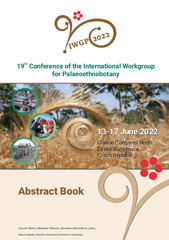Приказ основних података о документу
Agricultural niche building in the Neolithic central Balkans
| dc.contributor | Beneš, Jaromír | |
| dc.contributor | Ptáková, Michaela | |
| dc.contributor | Bernardová, Alexandra | |
| dc.creator | Filipović, Dragana | |
| dc.creator | Obradović, Djurdja | |
| dc.date.accessioned | 2024-03-06T10:53:27Z | |
| dc.date.available | 2024-03-06T10:53:27Z | |
| dc.date.issued | 2022 | |
| dc.identifier.isbn | 978-80-7394-937-2 | |
| dc.identifier.uri | http://rai.ai.ac.rs/handle/123456789/1610 | |
| dc.description.abstract | Agronomic studies emphasise that agriculture is modelled by different groups of factors that form complex and dynamic socio-ecological systems of agricultural production. Biological by nature, this form of production is influenced by natural environment, many aspects of which are not under farmer’s control, such as, for instance, species suitability, (micro-)regional climate, pests and diseases. Farming decisions are further shaped by economic goals, including ensuring dietary sustenance and generating income. Finally, agricultural activities are embedded in the social contexts created and reproduced by the farming households and societies. This presentation is concerned with plant-based agricultural production in the Neolithic in the central part of the Balkan Peninsula. It observes how crop cultivation practices varied between the settlements and how they changed through the c. 1700-year long period (6200-4500 BC). Two transformational developments punctuate this sequence: (1) transmission in the late 7th millennium BC of the Early Neolithic farming practices northwards from the Aegean and into the continental parts of the Balkan Peninsula. We track adaptations that these practices underwent, as evidence of adjustment to local environments and climate; such adaptations underpinned creation of the regional socio-economic context known as the Starčevo culture; (2) emergence of a new socio-economic context, the Vinča culture, in the 2nd half of the 6th millennium BC, accompanied by new pottery technology and settlement pattern, an apparent increase in the population size, and followed by the beginning of extractive metallurgy at the turn of the millennia; we illustrate how changes in crop production were one additional element of this general economic growth. For archaeobotanical inferences on the adaptations and modifications in plant production, we rely on the analysis of crop and wild diversity (=the range of species and their relative abundance) in the assemblages from Starčevo and Vinča culture sites in Serbia. | sr |
| dc.language.iso | en | sr |
| dc.rights | openAccess | sr |
| dc.rights.uri | https://creativecommons.org/licenses/by-sa/4.0/ | |
| dc.source | 19th Conference of the International Workgroup for Palaeoethnobotany, České Budějovice, 13 - 17 June 2022, Abstract Book | sr |
| dc.subject | agriculture | sr |
| dc.subject | Neolithic | sr |
| dc.subject | plant remains | sr |
| dc.subject | central Balkans | sr |
| dc.title | Agricultural niche building in the Neolithic central Balkans | sr |
| dc.type | conferenceObject | sr |
| dc.rights.license | BY-SA | sr |
| dc.citation.epage | 206 | |
| dc.citation.spage | 206 | |
| dc.identifier.fulltext | http://rai.ai.ac.rs/bitstream/id/4784/Filipovic_Obradovic_19th_Conference_of_IWGP.pdf | |
| dc.identifier.rcub | https://hdl.handle.net/21.15107/rcub_rai_1610 | |
| dc.type.version | publishedVersion | sr |


